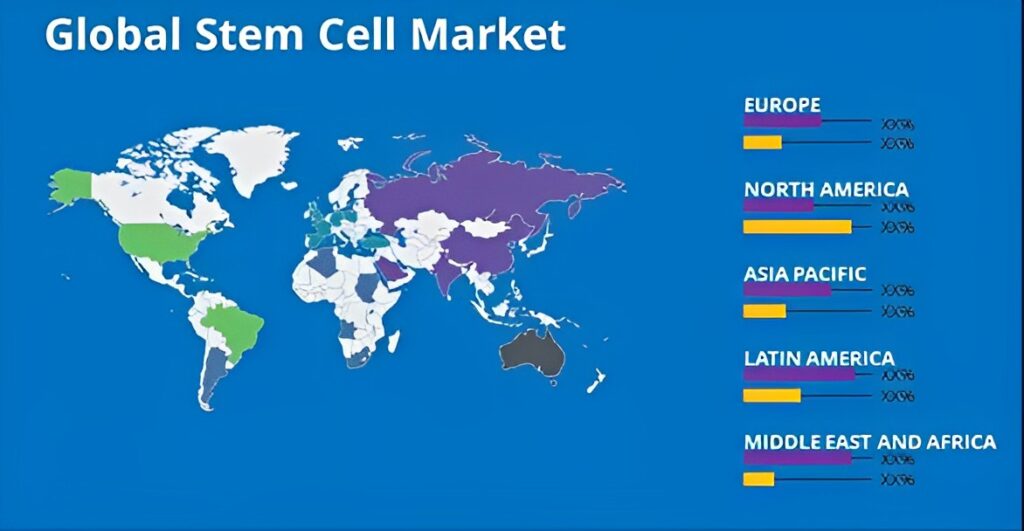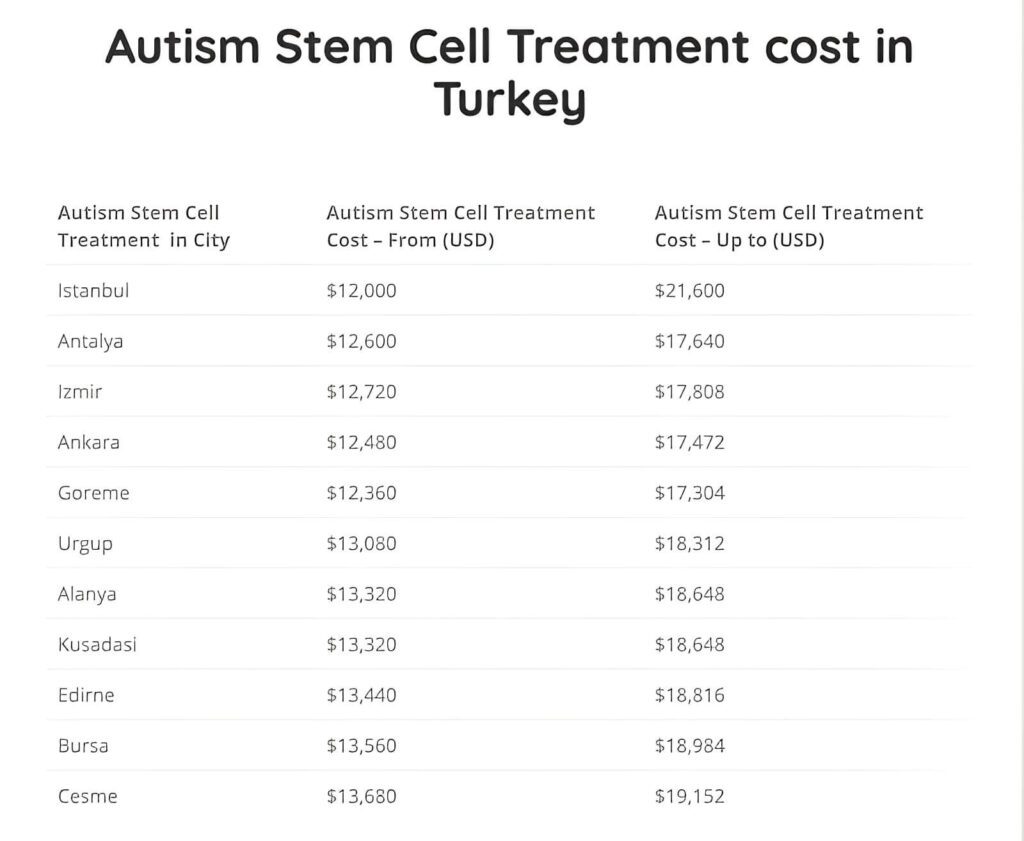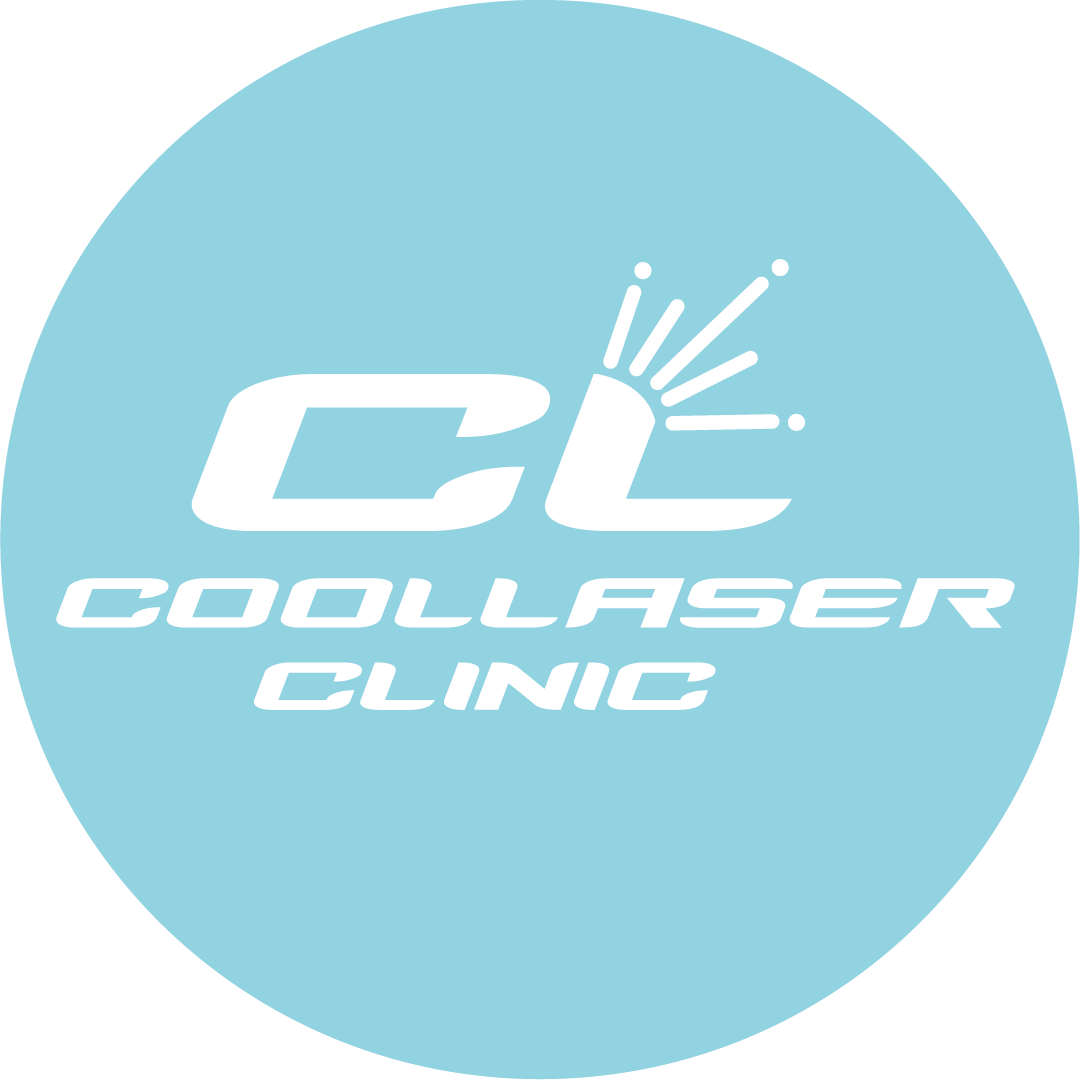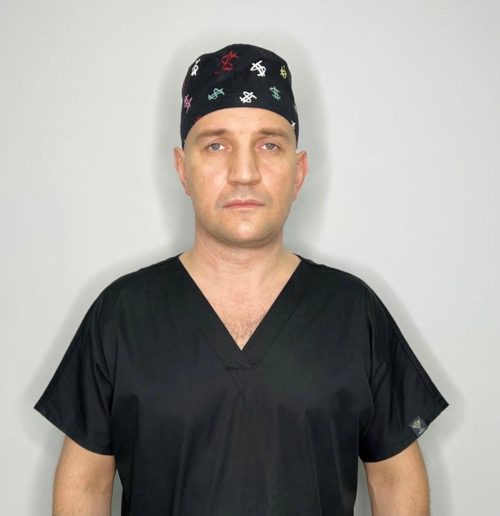Average prices of stem cell treatments in different countries
The prices of stem cell treatments for various diseases are becoming more and more interesting as medical tourism is gaining popularity all over the world. Treatment with stem cell preparations (hereinafter referred to as SC) allows restoring damaged tissues and organs, as well as reducing the risk of transplant rejection. In this article we will review the latest news about the achievements and prices of stem cell treatments in different countries, and focus on the problems faced by scientists and patients.
–

–
What is being treated with stem cells in other countries?
Prospects for the use of stem cells in the treatment of various diseases Chronic diseases:
Studies in the U.S. have shown that stem cells can be used to treat diabetes, autoimmune diseases and Parkinson’s disease.
In Japan, scientists have successfully used stem cells to treat heart failure.Studies in the U.S. have shown that stem cells can be used to treat diabetes, autoimmune diseases and Parkinson’s disease.In Japan, scientists have successfully used stem cells to treat heart failure.
Oncology:
Israel and China are conducting research on the use of stem cells to treat breast, lung and skin cancers.
In Germany, patients with leukemia are successfully treated with stem cells.Israel and China are conducting research on the use of stem cells to treat breast, lung and skin cancers.In Germany, patients with leukemia are successfully treated with stem cells.
Injuries and injuries:
In Australia and Japan, spinal and muscle injuries are successfully treated with stem cells.
In Canada, scientists have tested stem cells to treat brain injuries.Australia and Japan successfully treat spine and muscle injuries with stem cells.In Canada, scientists have tested stem cells to treat brain injuries.In Australia and Japan, spinal and muscle injuries are successfully treated with stem cells.In Canada, scientists have tested stem cells to treat brain injuries.Australia and Japan successfully treat spine and muscle injuries with stem cells.In Canada, scientists have tested stem cells to treat brain injuries.
Problems of Using Stem Cells in Treatment
Despite many advances, the use of stem cells in the treatment of diseases faces challenges:
Ethical issues related to stem cell sources.
High costs of research and stem cell production.
Limited availability of stem cell sources.
Risk of developmentEthical issues related to stem cell sources.High costs of research and stem cell production.Limited availability of stem cell sources.Risk of development
The use of stem cells by non-specialty clinics, if approached inappropriately, can be accompanied by some side effects, such as the risk of infection or even cancer development. In addition, the effectiveness of stem cell therapy can vary from case to case, depending on many factors.
–

FAQs:
- What sources are used to obtain stem cells? There are various sources for stem cells, such as cord blood, bone marrow, adipose tissue and embryonic stem cells.
- How does the stem cell transplant procedure work? Before transplantation, the patient is examined and prepared. Stem cells are then injected into the patient’s body through a vein or injection into the desired area.
- Can stem cells cause rejection? There is a risk of stem cell rejection, but it is lower than with other transplantation methods.
What diseases are most successfully treated in different countries?
Stem cell therapy is a promising method for treating various diseases, but its effectiveness can vary depending on many factors. Let’s look at which diseases are most successfully treated in different countries:
- U.S:
Diabetes
Autoimmune diseases
Parkinson’s diseaseDiabetesAutoimmune diseasesParkinson’s disease
- Japan:
Heart failure
Spinal and muscle injuriesHeart failureSpinal and muscle injuries
- Israel and China:
Breast cancer
Lung cancer
Skin cancerBreast cancerLung cancerSkin cancer
- Germany:
- Leukemia
- Canada:
- Traumas of the brain
It is worth noting that the effectiveness of stem cell treatment can vary depending on many factors, such as the age of the patient, the stage of the disease and the type of stem cells used. It is also important to consider the ethical, legal and financial aspects of the use of stem cells in medicine. In general, the use of stem cells in the treatment of diseases is a promising direction in medicine, which has the potential to achieve great results in the future.
Stem cell treatment prices: list by country and by disease (list)
The cost of stem cell treatment can vary depending on many factors, such as country, type of disease, stage of disease, method of obtaining and use of stem cells. Below is a list of comparative prices by country and for some diseases:
- U.S:
- Diabetes treatment – $10,000 to $50,000
- Parkinson’s disease treatment – $25,000 to $100,000
- Treatment of autoimmune diseases – from $10,000 to $50,000
- Japan:
Treatment of heart failure – $20,000 to $50,000
Treatment of spinal and muscle injuries – $15,000 to $40,000
- Israel and China:
Breast cancer treatment – $20,000 to $50,000
Lung cancer treatment – $20,000 to $60,000
Skin cancer treatment – from $10,000 to $30,000
- Germany:
- Leukemia treatment – $20,000 to $50,000
- Canada:
- Treatment of brain injuries – $15,000 to $40,000
Worldwide prices of stem cell treatments can vary greatly depending on the type of disease and the method of treatment. For example, using your own stem cells can be more expensive than using donor cells. In general, the cost of stem cell injections can be high, but it can be justified by the high efficiency and the possibility of avoiding surgery. In any case, it is worth considering not only the cost of treatment, but also other aspects such as ethical and legal issues, the availability of treatment and its effectiveness.
–

How many days treatment lasts in different countries (comparison)
The duration of stem cell treatment may depend on many factors, such as the type of disease, stage of disease, method of stem cell collection and use. Below is a list of comparable treatment durations in different countries:
- U.S:
- Diabetes treatment – 3 to 5 days
- Parkinson’s disease treatment – 3 to 5 days
- Autoimmune disease treatment – 3 to 5 days
- Japan:
- Treatment of heart failure – 3 to 5 days
- Treatment of spinal and muscle injuries – 3 to 5 daysTreatment of heart failure – 3 to 5 days
- Israel und China:
- Breast cancer treatment – 3 to 5 days
- Lung cancer treatment – 3 to 5 days
- Skin cancer treatment – 3 to 5 days
- Germany:
- Leukemia treatment – 3 to 5 days
- Canada:
- Treatment of brain injuries – 3 to 5 days
The duration of stem cell treatment can vary depending on the individual situation and can be prolonged depending on the effectiveness of the treatment and the individual needs of the patient. In general, stem cell treatment is a quick and uncomplicated process that does not require prolonged hospitalization.
Comparison of the effectiveness of treatment in different countries
The effectiveness of stem cell treatment may depend on many factors, such as the type of disease, the stage of the disease, the method of stem cell collection and use, and the individual characteristics of the patient.
Let’s look at the comparative effectiveness of treatment in different countries:
- U.S:
Treatment of diabetes – the effectiveness of the treatment is between 50% and 80%, depending on the type of disease.
Treatment of Parkinson’s disease – the effectiveness of treatment ranges from 40% to 60%, depending on the stage of the disease.
Treatment of autoimmune disease – the effectiveness of treatment ranges from 70% to 90%, depending on the type of disease.
- Japan:
Treatment of heart failure – treatment effectiveness ranges from 50% to 80% depending on the stage of the disease.
Treatment of spine and muscle injuries – treatment effectiveness ranges from 70% to 90% depending on the type of disease.
3. Israel and China:
- Breast cancer treatment – treatment effectiveness ranges from 70% to 90% depending on the stage of the disease.
- Lung cancer treatment – effectiveness ranges from 50% to 80% depending on the type of disease.
- Skin cancer treatment – treatment effectiveness ranges from 60% to 90% depending on the stage of the disease.
4. Germany:
- Leukemia treatment – treatment effectiveness ranges from 50% to 80% depending on the type of disease.
Canada:
- Treatment of brain injuries – the effectiveness of treatment ranges from 50% to 70%, depending on the degree of injury.
It should be noted that the effectiveness of stem cell treatment may vary greatly depending on the specific situation and individual characteristics of the patient. In general, the use of stem cells in the treatment of various diseases is a promising direction in medicine, which has the potential to achieve great results in the future. However, before using stem cells in medicine, it is necessary to consider not only the effectiveness of the treatment, but also other aspects such as ethical and legal issues, availability of the treatment, prices of stem cell treatment and possible side effects.
In general, the effectiveness of treatment can depend on many factors, and the choice of country and treatment method should be tailored to the individual patient and doctors’ recommendations. It is important to choose proven and certified medical facilities and treatment methods that maximize the effectiveness and safety of treatment.
As mentioned in the paragraph about stem cell treatments in Israel and China, these countries use stem cells to treat breast cancer, lung cancer, and skin cancer.
Israel is one of the leaders in the field of stem cell research and the development of new therapies for diseases using cell technologies. The Hadassah Medical Center in Jerusalem is one of the largest and most reputable medical clinics in Israel for research and treatment using cell-based medicines. It offers treatment of breast cancer, lung cancer and other diseases using the patient’s own SC, which reduces the chance of rejection and increases the effectiveness of treatment. In addition, the clinic has a high reputation and a lot of positive feedback from patients who are not worried about the price of stem cell injections.
Research and treatment of diseases with SC is also carried out in China. One of the largest clinics is Puhua International Hospital, located in Beijing. The clinic specializes in treating cancer using cell technology, including breast cancer, lung cancer, and other cancers. The treatment is based on stem cell therapies and immunotherapy to improve its effectiveness and reduce the risk of side effects. In addition, the clinic is internationally recognized and has numerous positive patient testimonials.
–
Prices for Autism Stem Cell Treatment in Turkey
We present the cost of treatment in various clinics in Turkey, with a reference to the international медицинский портал
–

You can read more about this in our article Treating Autism
–
What do the prices of cancer stem cell treatments depend on?
The prices of stem cell treatments for breast cancer, lung cancer and skin cancer in Israel and China can vary depending on many factors, such as the type of disease, stage of disease and method of treatment. However, the prices quoted in this article are approximate and based on average treatment costs in these countries.
It is allowed to specify the prices of stem cell treatment on the spot and discuss them with the doctor or clinic representative.
It is important to note that stem cell treatments are relatively new and are not always covered by health insurance. In addition, the price of stem cell treatment can be significantly higher if the patient needs to undergo multiple courses of treatment or be treated as part of a research team.
Despite the high cost of stem cell treatment in Israel and China, these countries enjoy a good reputation for treating cancer and many other diseases with stem cells. Many patients choose to receive treatment in these countries because they hope to receive more effective and innovative treatments there.
–

Links to official pages of clinics where stem cell cancer treatment is confirmed:
- Hadassah Medical Center: https://www.hadassah.org.il/en/departments/stem-cell-research-and-regenerative-medicine/
- Puhua International Hospital: https://puhuahospital.com/cancer-treatment/
On these clinic pages you can find detailed information about treatments, information about the clinics and their staff, patient reviews, and how much stem cells cost. In addition, these pages provide contact information for contacting the clinics for advice and prices of stem cell treatments.
There are a number of scientific and medical publications that have published reviews and studies on the effectiveness of stem cell cancer treatments in Israel and China. Here are some examples of such publications and links to relevant articles:
- The Lancet Oncology – “Stem-cell transplantation in a patient with HIV infection and lymphoma”: https://www.thelancet.com/journals/lanonc/article/PIIS1470-2045(00)00223-3/fulltext
- International Journal of Stem Cells – “Autologous adipose-derived stem cells in the treatment of chronic radiation-induced skin ulcers in a patient with breast cancer: a case report”: https://www.ncbi.nlm.nih.gov/pmc/articles/PMC5620478/
- Cancer Letters – “Stem cell therapy for lung diseases”: https://www.sciencedirect.com/science/article/pii/S0304383514003322
- Nature – “Stem cells: Chinese clinic offers treatments to avoid disease”: https://www.nature.com/news/stem-cells-chinese-clinic-offers-treatments-to-avoid-disease-1.13513
- The New England Journal of Medicine – “Stem-Cell Therapy for Cardiac Disease”: https://www.nejm.org/doi/full/10.1056/NEJMoa071051
These articles review various aspects of cancer and other disease treatment using SC in Israel and China. They describe the results of clinical trials, the use of various methods and technologies, and patient feedback.
Global news about treatments using regenerative technologies in different countries shows significant progress in the field of medicine. The average prices of stem cell treatments in different countries fluctuate, but are steadily increasing.
Calculate the cost of the “Stem Cell Treatment” procedure
Leave your information and we will contact you for an accurate assessment of the procedure

Despite some problems and limitations, the use of stem cells opens up new possibilities for the treatment of various diseases. The future of stem cell therapy looks promising, and we can expect even greater advances in the near future.






